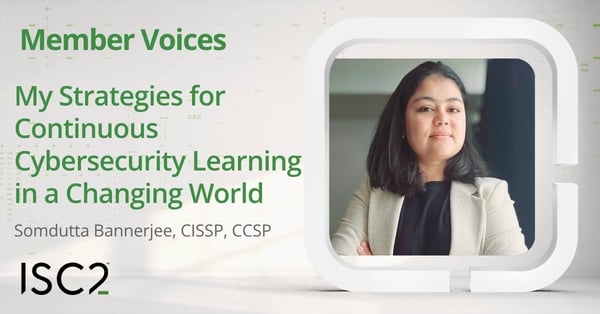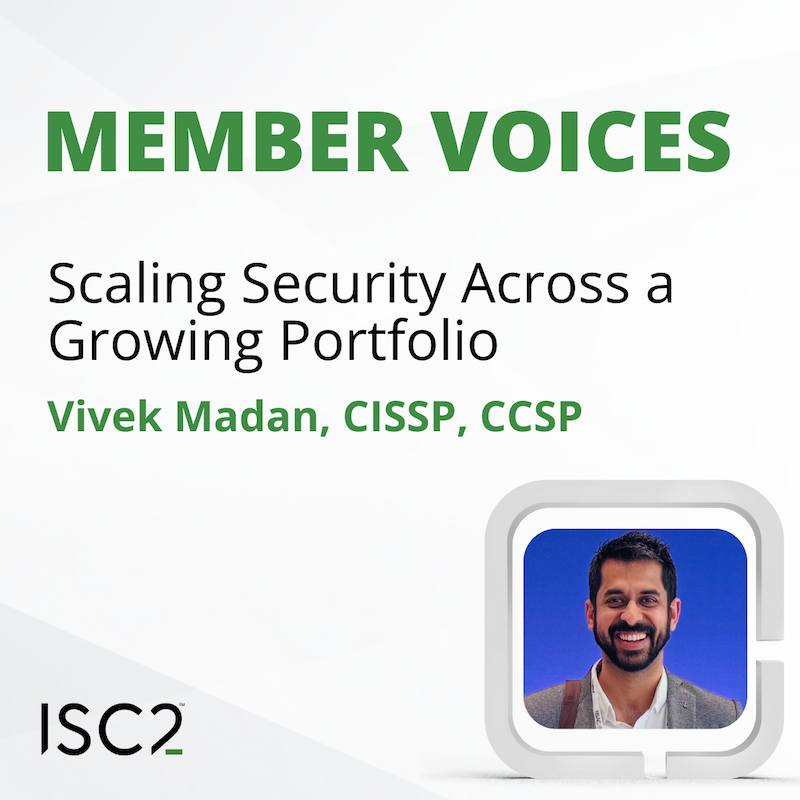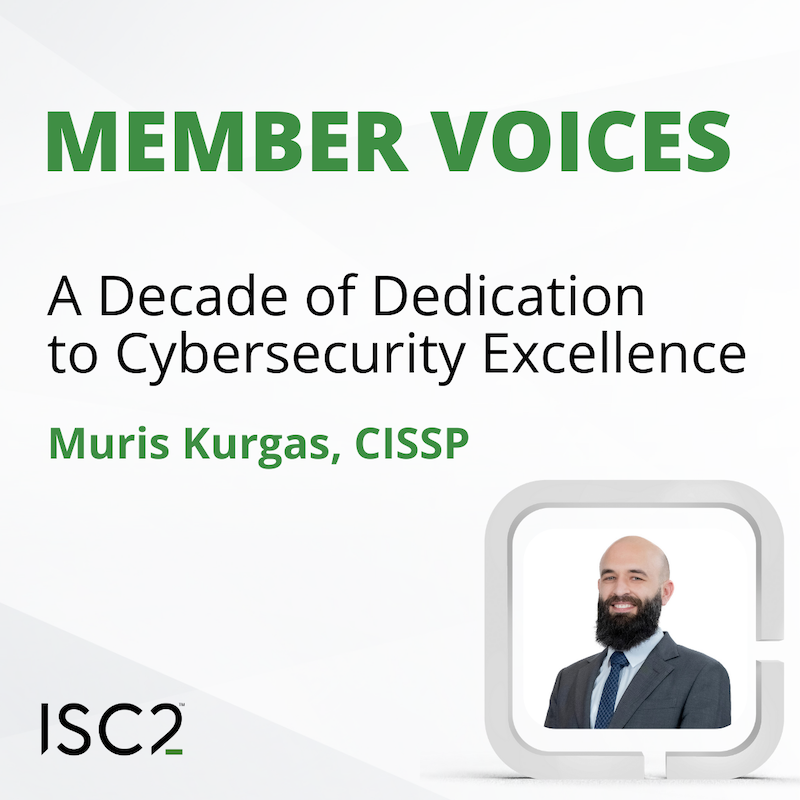In the dynamic world of cybersecurity, continuous learning isn't just important but imperative. Somdutta Bannerjee, CCSP, CISSP, shares how she approaches this challenge.
 Disclaimer: The views and opinions expressed in this article belong solely to the author and do not necessarily reflect those of ISC2.
Disclaimer: The views and opinions expressed in this article belong solely to the author and do not necessarily reflect those of ISC2.
As threats evolve swiftly and technologies emerge incessantly, staying current is vital. Amid this urgency, a significant challenge arises: how can we as cybersecurity professionals navigate the vast sea of information without losing our way? Here’s my take on this challenge and how I navigate through the maze of information overload effectively.
We are complex learners. We need our education like we need our morning coffee: relevant, practical and on our terms. This principle underscores the importance of aligning training content with real-world cybersecurity challenges, along with incorporating hands-on labs and self-paced learning opportunities. By applying this principle, I believe we can deepen engagement and retention, ensuring that learning translates into tangible skills and insights.
Data In
We must also consider the psychology of learning, specifically, cognitive load theory. Understanding how our brains process information can be as enlightening as finally understanding why our cats stare at us like we owe them money. Pioneered by John Sweller, an Emeritus Professor at UNSW Sydney, this theory delineates three types of cognitive load:
- Intrinsic Load – Refers to the inherent difficulty of the material. An example of a high intrinsic load might be asymmetric encryption, in that understanding the complex mathematics involved can be inherently challenging.
- Extraneous Load – Stems from poorly presented information that unnecessarily complicates learning. An example of a task with a high extraneous load might be learning about network security from materials that includes too much text, irrelevant images and unclear diagrams. It can overwhelm and confuse learners, making it harder to grasp the core concepts.
- Germane Load – Enhances learning by engaging us meaningfully and helping to build mental models relevant to our tasks. An example of this might be conducting a hands-on lab exercise in which we set up and configure a firewall. This practical exercise helps build a mental model of how firewall rules work and how they protect a network, making the learning experience more effective and engaging.
The challenge now is how we, as learners, can effectively manage cognitive loads to our advantage. We can employ systematic approaches like spaced repetition, ‘chunking’ complex concepts into manageable parts and engaging through active learning strategies. This includes problem-solving exercises and collaborative projects. Such methods not only facilitate learning but also foster practical application and teamwork.
Creating Bespoke Learning Opportunities
Personalizing learning experiences based on individual preferences further enhances engagement and retention. For instance, visual learners benefit from infographics and videos explaining complex network architectures, while hands-on learners thrive in workshop environments where we can interact directly with cybersecurity tools and technologies.
Advanced strategies such as curating content from trusted sources, leveraging AI-driven tools for content curation, and subscribing to cybersecurity newsletters all provide additional avenues to stay abreast of industry developments. These strategies ensure we access accurate and timely information, enhancing our knowledge base and readiness to tackle evolving cybersecurity challenges effectively.
Developing a personally tailored micro-learning strategy involves setting specific learning goals, assessing current knowledge levels and implementing structured learning sessions. Consistency, variety in learning formats, and adaptability to emerging trends are key considerations in sustaining continuous learning and skill enhancement in cybersecurity.
How Does This All Apply in the Real World?
Recently, I wanted to learn more about the implications of artificial intelligence (AI) in cybersecurity. I developed a structured learning system that integrated all the strategies discussed above:
- Aligning Content with Real-World Challenges – I identified specific areas where AI is impacting cybersecurity, such as threat detection, incident response and predictive analytics. I incorporated hands-on labs and self-paced learning opportunities, using AI simulation tools to understand how these technologies operate in practice.
- Applying Cognitive Load Theory – To manage the complex subject of AI, I broke it down into manageable chunks. I started with fundamental concepts like machine learning algorithms and gradually progressed to more intricate topics such as neural networks and deep learning applications in cybersecurity. By using spaced repetition, I reinforced these concepts over time, ensuring deeper retention and understanding.
- Personalizing the Learning Experience – As a visual learner, I used infographics and video tutorials to visualize AI processes and their applications in cybersecurity. I also engaged in workshops and interactive sessions where I could directly apply AI tools to simulated cybersecurity scenarios, enhancing my hands-on experience.
- Developing a Micro-Learning Strategy – Setting specific learning goals, such as understanding the ethical implications of AI in cybersecurity and mastering AI for threat intelligence, was crucial. I assessed my current knowledge levels through self-assessment tools and structured my learning sessions to address gaps and build on my existing knowledge. Consistency was key; I dedicated regular time slots each week to focus on these learning goals, using a variety of formats like articles, videos and hands-on projects.
- Curating Content from Trusted Sources – To stay current, I curated content from trusted sources, such as recognised AI and cybersecurity journals, and subscribed to newsletters that provided the latest updates and trends. I engaged AI-driven content curation tools to filter and prioritize relevant information, ensuring I remained informed without feeling overwhelmed.
How This Approach Benefitted Me
Creating a structured learning system has profoundly transformed my approach to continuous learning, preventing me from being overwhelmed by the sheer volume of information. By implementing a systematic framework, I have gained a holistic perspective on my learning journey, allowing me to prioritize and focus on what truly matters.
This approach has also reframed my attitude towards continuous learning, shifting from a mindset of "I don't know" to "I don't know it – yet." This subtle but powerful change fosters a growth mindset, encouraging curiosity and resilience in the face of new and complex challenges. Embracing this mindset not only enhances my knowledge acquisition but also instills confidence in navigating the ever-evolving cybersecurity landscape.
By embracing structured learning paths, curating content and tailoring our learning journey to fit our unique style and needs, we not only stay ahead of the curve but lead the charge against cyber threats. Mastering cybersecurity isn't just about acquiring knowledge, it's about applying it strategically and innovatively to navigate the ever-changing cybersecurity landscape proficiently.
Somdutta Banerjee, CCSP, CISSP, has 12 years of experience in information security, risk management and cybersecurity leadership across financial services and consulting sectors. She has held management and technical roles, with responsibility for strategic security program management, complex change initiatives, and cloud security transformations.
Related Insights


